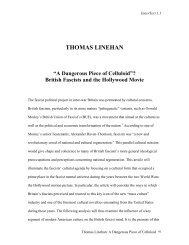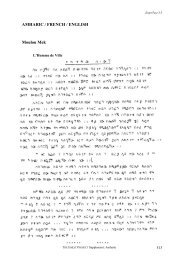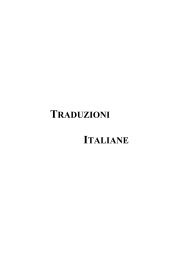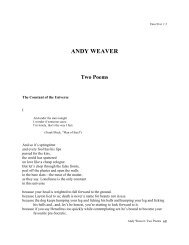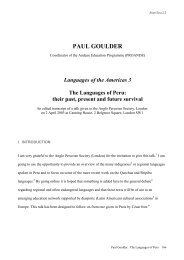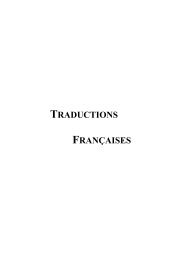Thomas Lamarre: An Introduction to Otaku Movement - Arts @ Brunel
Thomas Lamarre: An Introduction to Otaku Movement - Arts @ Brunel
Thomas Lamarre: An Introduction to Otaku Movement - Arts @ Brunel
Create successful ePaper yourself
Turn your PDF publications into a flip-book with our unique Google optimized e-Paper software.
EnterText 4.1<br />
conjunction with the exhibition, Azuma Hiroki discussed the theoretical implications of<br />
superflat visuality. 9 In general, Super Flat art objects and theories presented the<br />
possibility of a visual field devoid of perspective and devoid of hierarchy, in which all<br />
exists equally and simultaneously. Superflat, as Murakami and Azuma stress, grew out of<br />
the experiences of a sort of “otaku generation” steeped in manga and anime, which is<br />
central <strong>to</strong> the work of Okada Toshio, founder of one of the premier animation studios of<br />
the 1990s, Gainax Studios. Superflat frequently calls attention <strong>to</strong> the stylistic approaches<br />
of anime and otaku appearing in Gainax’s anime series, especially those of <strong>An</strong>no<br />
Hideaki.<br />
What interests me about Gainax, Super Flat and the discussions of anime and<br />
otaku associated with them is their tendency <strong>to</strong> look at anime and otaku in terms of<br />
something like constituent power. Across these anime series, art objects, cultural<br />
criticism and aesthetic theories, I see an approach <strong>to</strong> anime that consistently emphasises<br />
the effects of pure immanence—as if anime and otaku had broken with all prior<br />
formations and organisation (of vision, knowledge, and community), bringing viewers<br />
closer <strong>to</strong> a pure experience of the postmodern era. Yet, for all their theoretical ambition<br />
and conceptual insights, these discussions s<strong>to</strong>p short of a theory of immanence or a<br />
theory of anime. Rather they tend <strong>to</strong>ward the formation of a discourse on anime—a<br />
discourse on the powers of anime, which evokes them in terms of pure immanence. In<br />
this respect, this discourse on anime and otaku is more a symp<strong>to</strong>m of the postmodern or<br />
the information age, rather than a critical intervention. Nonetheless this discourse strikes<br />
me as exceedingly important in assessing what truly is new and different about anime and<br />
<strong>Thomas</strong> <strong>Lamarre</strong>: <strong>Otaku</strong> <strong>Movement</strong> 154



